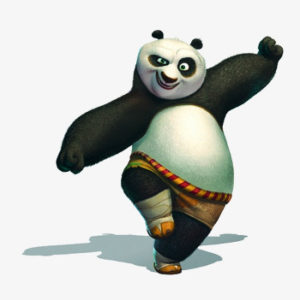There is a famous traditional saying describing the process of learning taiji (tai chi):
from similar in appearance to similar in spirit
The taiji classics also say: “no excess, no deficiency.” When we start to learn taiji movement, we try to emulate the instructor precisely. We move at exactly the speed of the instructor and, to the best of our ability, perform the movement exactly as they do. We do this for two reasons:
- if we find ourselves behind the instructor, we must be adding movement that should not be there (excess), and
- if we find ourselves ahead of the instructor, we are omitting movement (and/or, importantly, internal mechanics!) that should be there (deficiency).
If we ponder the art and practice seriously, and are blessed with an instructor that understands taiji movement deeply (and will share that knowledge with us), at some point we reach a level of understanding energy – of understanding the kinetic chain that yields silk reeling, understanding the flow of yin and yang that is the rhythm of taiji movement, and of understanding how energy is stored and issued. In short, understanding the “elastic force” that characterizes, and is a goal of, all internal martial arts.
At this point, we realize that any movement can be done as taiji movement – any form of any style of martial art, indeed any human movement, can be executed as taiji movement.
There is a test to see if you are approaching this level. Beginners always ponder the “application” of a form movement. Those that have reached the level of understanding energy never have to ask this question – the energy, and therefore the myriad potential applications of the movement, are obvious to them.
I recall working with a taiji brother on broadsword form. To help him understand the energy and intention of a particular movement, I explained that it was a very close range fighting technique. He shook his head and asked “how do you know that?” A valid question – no teacher can possibly explain the (usually many possible) applications of every movement of every form to every student. And nobody, not even distant relatives, can know all of the thoughts and intentions of the person that originally created the movement – often several centuries ago. I simply understood very well the possibilities of how power could be stored and issued in that form, and how that power is expressed in a short-range technique. (Taiji is a combined grappling and striking art – a very old “mixed martial art” – and includes short, middle, and long range techniques. More about that in a later post).
To be sure, there is no end to improving one’s understanding and ability. We never stop learning and improving – mentally, physically, and spiritually. I truly believe that, if taiji form is practiced as qigong, with intense mind/body/spirit integration, you can learn something new, and therefore improve a little bit, every time you do the form. The waters are very deep, indeed! But everyone can reach a modest level of understanding the “little dao” energy of taiji movement. At this point you can, and should, begin to make the art your own – to be similar in spirit to your teacher. No two people are identical physically, mentally, or spiritually. No two masters look the same.
With that introduction, and having committed the writing sin of burying the lead (this post is assumed for serious readers :-), we can look at the wisdom of Kung Fu Panda. For those who have not seen the animated picture, the movie climaxes when the bumbling but virtuous student (Panda Po) combats the evil student (leopard Tai Lung), who is seeking to return to capture the school’s Dragon scroll containing the secret of limitless power and which the master had previously denied him. (The contents of the scroll are revealed, but I won’t play the spoiler here.) At the climax of the climax of the movie, Panda, in desperation, prepares to deliver a “super secret” technique. Recognizing this, Tai Lung is startled and asks “the master taught you the super secret technique?” Virtuous Panda Po responds,
no, I figured it out myself.
and then defeats and banishes Tai Lung.
Panda Po reached the level of understanding energy 🙂

